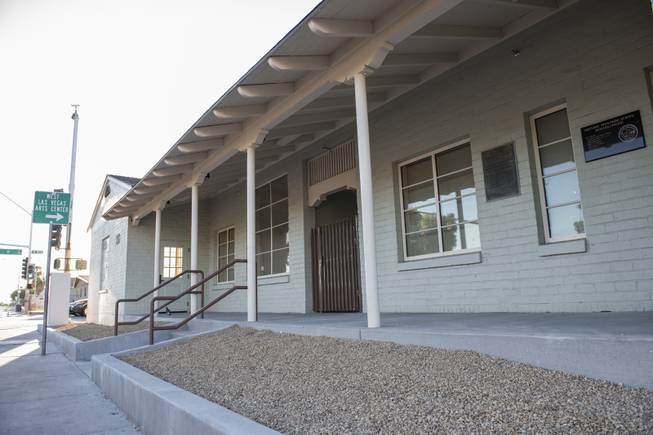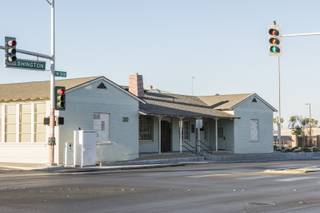
This images shows the newly renovated Historic Westside School on Thursday, Aug.11, 2016. After undergoing extensive renovations, the building is slated to reopen in late August.
Sunday, Aug. 21, 2016 | 2 a.m.
On a recent morning, Las Vegas City Councilman Ricki Barlow stood on the Historic Westside School campus, gazing at what was once the cafeteria. He remembered the home-cooked rice, corn bread, black-eyed peas and fried chicken served to students, as he had attended a Head Start program at Las Vegas’ oldest schoolhouse.
Built in 1923, it was the city’s first racially integrated school, and the first attended by Native American students from the local Paiute tribe. More than four decades later, in 1967, it ceased operating as a full-fledged public school.
Aside from housing community radio station KCEP-FM, the campus at 330 W. Washington Ave. stood largely empty, but not forgotten: It’s on city, state and national registers of historic places. And a $12.5 million renovation was just completed, to be revealed to the public Aug. 27.
The project was funded by several sources, including $4 million from the federal New Market Tax Credit program, which supports development in distressed communities.
KCEP will remain, and other businesses are moving into office space. The Las Vegas City Council recently approved a lease with Tech Impact, a nonprofit that provides technology training to young adults in urban areas.
It’s a vision Barlow once sketched on a napkin. He wanted to make the Historic Westside School a gathering spot for the entire West Las Vegas community and, in the process, jump-start more revitalization in the area.
To that end, the courtyard has benches, desert landscaping and a plaza, making it an ideal spot for reading a book or meeting a friend, Barlow said. Tiled murals, previously displayed elsewhere on campus, adorn a nearby wall.
“I love redevelopment. I love bringing in services the community lacks and trying to fill that gap,” said Barlow, who represents Ward 5. “I knew I needed to do something that was not only significant but impactful.”
The process also needed to be mindful of architectural integrity. City staff worked with the State Historic Preservation Office to ensure that any changes reflected the original character, said Samuel Tolman, the city’s architectural project manager. City officials asked residents to share old photos of the building’s interior to help determine design features such as wall color and window style.
A pleasant surprise occurred mid-facelift: When workers peeled back carpet and tile, they discovered original pine floors in decent condition, Tolman said. Any patchwork done to the floors is obvious — a slightly different shade of wood — because preservationists didn’t want to create a false sense of perfection.
“It has been absolutely wonderful,” Tolman said of the project. “It was really in poor shape ... but we’ve been able to go in and bring it back.”
If other redevelopment plans come to fruition, the Historic Westside School reopening won’t be the last significant upgrade to the culture-rich neighborhood, which has long struggled with poverty and urban decay.
“The resurgence (of the school) most definitely will be a clear signal to the community that this Westside community is on a comeback,” Barlow said.
Phase 2 of the city’s plan calls for replacing the Variety Early Learning Center behind the school with commercial and retail space, Barlow said. The city expects to issue requests for proposals for that project early next year.
Barlow said he ultimately would like to see midrise apartments built on neighboring property that backs up to Interstate 15.
Meanwhile, the owners of the former New Town Tavern at the corner of F Street and Jackson Avenue have plans to reopen it as the Tokyo Casino — part of a broader redevelopment plan that an architect associated with the project estimated would cost as much as $2 billion.
But the Nevada Gaming Control Board last month did not grant initial approval for a gaming license at the property. The owners still are pursuing the license, and the board likely will reconsider the request, officials said.
All the development talk is what Barlow hoped would happen when he doodled on that napkin. Time will tell how much becomes a reality in the Historic Westside.
“I just want to be the one to light the match and then let the business community take over,” he said.


Join the Discussion:
Check this out for a full explanation of our conversion to the LiveFyre commenting system and instructions on how to sign up for an account.
Full comments policy